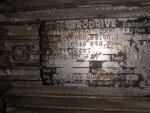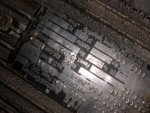Jody Boehs
Member
- Location
- Fairview, Oklahoma, USA
- Occupation
- Controls and Electrical Manager
Hello,
I have a machine with several VFDs on it. The operators of this machine have requested that the minimum speed setting be lowered even more. I have limits set on the touchscreen for 10% - 100%. They are wanting to go slower than the 10%. The motor current increases if the speed decreases. So, how slow can I actually go without harming the VFD or Motor?
My understanding of a VFD is ... The input voltage is converted to a higher DC voltage and then using an IGBT it is inverted back to AC in the desired frequency. I have been told that the IGBT "rebuilds" the sine wave(s) in small increments.
Now my theory is ... as the frequency decreases the sine wave(s) in a sense "stretches out" (maybe this doesn't make sense). Due to the slower frequency, the motor is "started" fewer times per second. And, if the motor is under a load, the amount of current needed to "restart" the motor is greater.
Now, the slower I go with the VFD, the harder it'll be on the motor, correct? Is it equally as hard on the VFD?
Hopefully this makes sense! Any thoughts would be greatly appreciated!
The VFDs I am using are GS2-43PO from AutomationDirect.com .
Here is a link for them: https://www.automationdirect.com/ad...uency_drives_(vfd)/micro/drive_units/gs2-43p0
I have a machine with several VFDs on it. The operators of this machine have requested that the minimum speed setting be lowered even more. I have limits set on the touchscreen for 10% - 100%. They are wanting to go slower than the 10%. The motor current increases if the speed decreases. So, how slow can I actually go without harming the VFD or Motor?
My understanding of a VFD is ... The input voltage is converted to a higher DC voltage and then using an IGBT it is inverted back to AC in the desired frequency. I have been told that the IGBT "rebuilds" the sine wave(s) in small increments.
Now my theory is ... as the frequency decreases the sine wave(s) in a sense "stretches out" (maybe this doesn't make sense). Due to the slower frequency, the motor is "started" fewer times per second. And, if the motor is under a load, the amount of current needed to "restart" the motor is greater.
Now, the slower I go with the VFD, the harder it'll be on the motor, correct? Is it equally as hard on the VFD?
Hopefully this makes sense! Any thoughts would be greatly appreciated!
The VFDs I am using are GS2-43PO from AutomationDirect.com .
Here is a link for them: https://www.automationdirect.com/ad...uency_drives_(vfd)/micro/drive_units/gs2-43p0



